While most children played ball or dressed up in princess gowns, a young Sabrina Heiser only wanted one thing – to experience the beauty and wonder of life under the water.
This love of ocean life began when she was 8 years old and her parents introduced her to this wonderful thing called scuba diving. Now, the young German girl could do more than just dream of this magical underwater world; she could actually see it and touch it and truly be a part of it.
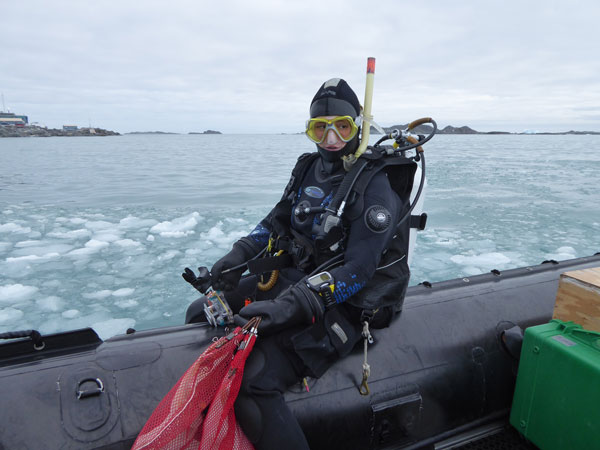
“My parents met and fell in love through scuba diving, so they wanted me to experience the same underwater adventures,” said Heiser, a 28-year-old UAB graduate candidate in the Biology Department. “That was the start of my future.”
Unfortunately, Heiser did not live near the ocean. She tried to learn about river ecosystems in elementary and high school, but it wasn’t until college that she was truly able to pursue her passion.
She chose a university that was located in Plymouth, a port town in southwest England known for its maritime heritage, and pursued a degree in marine biology. Her college choice was also based on the fact that it offered a scientific diving program that students could pursue alongside their undergraduate degrees. When she finished the diving program, she was able to volunteer at the National Marine Aquarium as a diver and continue building her diving skills.
Life was going great for the young college student. She was developing her diving skills, taking classes and getting involved in research, but she still didn’t have a clear direction in mind for her future – until her second year.
“We had a former student come in and talk to us about her job in Antarctica,” Heiser said. “She had been there for three years, and listening to her talk about her experiences just made something click and I knew I wanted to do that.”
So, she applied when she graduated in August 2012 and got a job with the British Antarctic Survey. For the next few months she went through extensive field training at the British Antarctic Survey’s office in Cambridge. Finally, it was time to go to the place she would call home for the next 2½ years – the Western Antarctic Peninsula.
“It was absolutely stunning,” Heiser said. “You watch all of the documentaries about the landscape, but when you get there and see it in person, it’s even more beautiful and majestic. The size of the glaciers, the sheer beauty of the ice, the whiteness of the snow – just beautiful.”
The station she was at consisted of about eight buildings and could hold up to 120 people in the summer months. But in the winter months, it was like a ghost town with only about 20 people. There was a 900-meter runway and planes would regularly come in during the summer with new people ready for field work. During the summer Heiser would sometimes hop on one of the planes going further into the field and assist in other jobs. Everyone once in a while she would stay at one of the refueling stations for a week or so to have a little break. She’d refuel planes, start generators and other such activities.
“The set of skills you had to have was quite broad, but you learn everything while you’re there,” she said. “You just have to learn to be adaptable.”
The weather was definitely something that required the ability to adapt. During the summer months it would be about 32 degrees, but in the winter, it would get down to about 5 degrees or below. Despite the cold, the thing that Heiser struggled with most was extended periods of bad weather that kept her from doing her job.
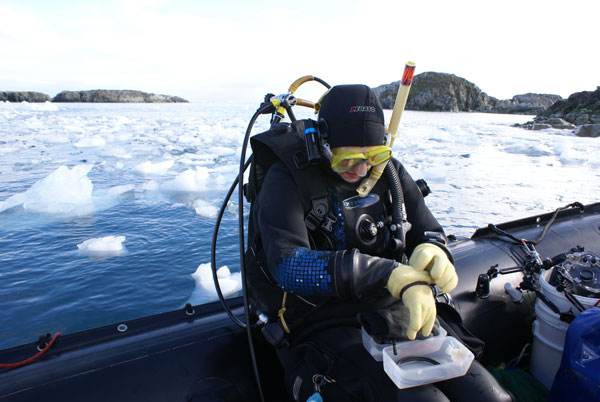
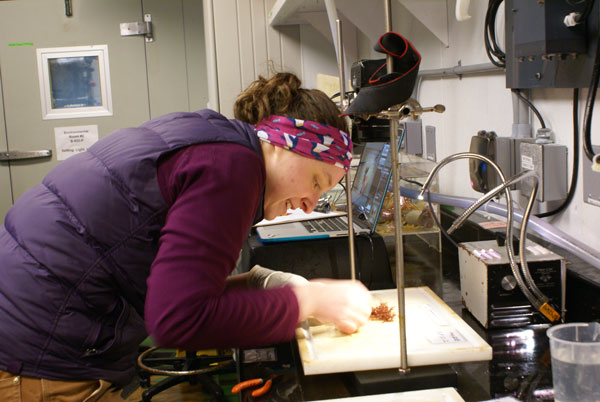
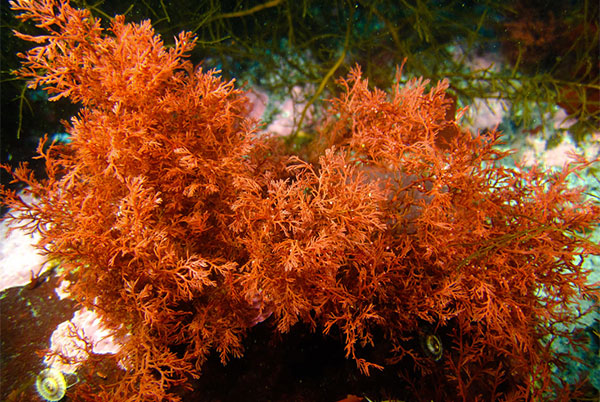
Heiser’s primary role as a marine assistant was to continue the long-term monitoring that had been going on for 20 years. She would go out on the boat several times a week and collect samples, and she would do monthly collections via scuba diving. She was specifically looking at the microalgae in the plankton of the water column to see how it was changing throughout the year. Similarly to trees that have leaves in the summer and are bare during the winter, microalgae grow during the summer and are dormant during the winter. Heiser also looked at the temperature and salinity in the water column. The data she collected went into a large data set that had been accumulating since the project’s start in 1998.
“You need to know the natural patterns in order to decide if differences between years have to do with global climate change, or if it’s a natural fluctuation,” Heiser said. “Everything goes hand in hand. If it’s getting warmer and the sun is coming back, it means that the microalgae can photosynthesize again and produce energy, fix carbon and grow – this leads to a so-called microalgal bloom, which turns the clear ocean water into a pea soup.”
What she found were major differences in weather in the two winters she was there. As it gets colder and there are days without much wind, a layer of sea ice forms on the water and it thickens over time and protects the water column from any further wind that comes along. In her first winter there was not a thick layer of sea ice so there wasn’t as big a bloom in the summer because the plankton had been disturbed. But in her second winter there was a great layer of sea ice that formed and Heiser said that seemed to result in a bigger bloom the next summer.
“The plankton is basically one of the foundations of the food chain,” she said. “Anything that comes after the plankton is going to suffer if this food source is not there. Everything is connected.”
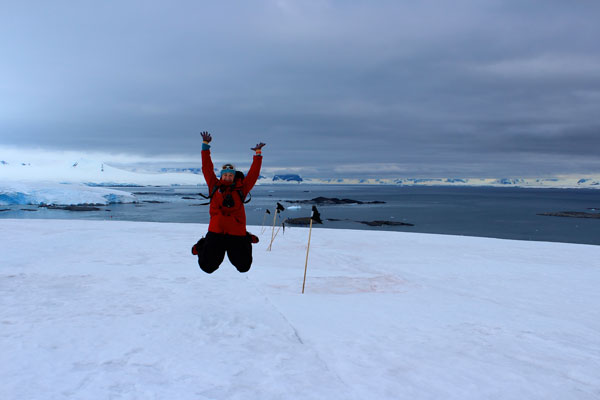
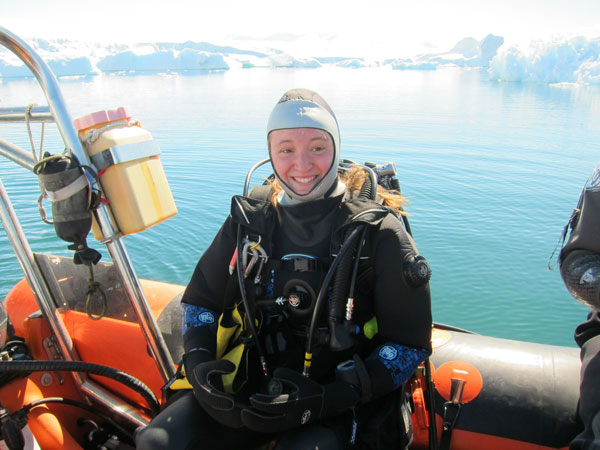
For 2½ years Heiser collected samples and did lab work with only a short six-week “sanity” break in between winters. But soon after Heiser decided it was time to move on.
“Antarctica was amazing, but I had been doing the same thing for more than 2 years and I discovered that just collecting data for someone else’s study wasn’t enough,” she said. “I wanted to ask the questions. I wanted to collect my own data. As fun as this was, I was always handing off the date to other scientists, and I discovered that I wanted to be that scientist.”
Luckily, she didn’t have long to wait before she was finally able to put her dream into action. While still in Antarctica, Heiser saw an advertisement about a UAB Ph.D. project that involved work with macroalgae (or seaweed) in Antarctica and knew she needed to apply. Heiser had worked with seaweeds as an undergraduate student and really enjoyed learning about this vital piece of the ecosystem. That combined with her love of Antarctica made this particular PhD project a dream program.
“It was the day we set sail from Rothera (the British station), and I was in tears about leaving,” she said. “Then I opened my email and found the offer from Dr. (Charles) Amsler to join the Ph.D. program at UAB. I was so excited to know I would be coming back and suddenly the goodbye turned into ‘I will see you later.’
So, with a plan firmly in place she took a short break and explored a few places in South America – namely the Galapagos Islands – and then home to Germany for some time with her family before moving to the United States.
“It was amazing to follow Darwin’s footsteps and explore the Galapagos Islands,” Heiser said. “I did my first dive without a drysuit in more than 2½ years. At first it was weird to dive just for fun, but it was great nonetheless, especially when we had a Whale shark swim by at one of our safety stops – it felt like a true BBC documentary moment.”
Heiser made the move to Alabama shortly before starting the program in January 2016. When she first saw Birmingham she was amazed by all of the green. She had assumed the city would be like her hometown, which was built on the coal and steel industry.
“I was so excited that I could get in a car and drive 30 minutes and go for a hike in a forest, as long as it wasn’t too hot,” she said. “I love that you can drive 5 hours and be by the ocean. The actual move wasn’t too bad. I had already lived in so many different places I had learned the quickest way for me to adapt was to have a ‘home base’ so I quickly set up my apartment, and then I was great.”
Her first year in Alabama was spent taking classes and preparing for her first field season with Amsler’s lab in Antarctica. The group was based out of Palmer Station, which was also on the Western Antarctic Peninsula but more north. It was also much smaller than her previous station, but the atmosphere was very similar.
“It was a great experience. You get really close to the people stationed there; it’s like a big family,” she said. “You have people from all sides – trade people, scientists, mechanics, chefs, etc. but they all pull together to do the work. You get to interact with people you wouldn’t normally interact with, and it really opens your perspective on life.”
During her first season, which ran from February to May 2017, Heiser was looking at chemical defenses being produced by a particular seaweed species that Amsler and his collaborators – Dr. James McClintock at UAB and Dr. Bill Baker at the University of South Florida – are studying. Some plants produce chemicals to make themselves taste nasty or mess up the grazers’ metabolism to ward off predators because they can’t run away when a predator tries to attack, she said. There are so many shrimp-like animals that sit on this seaweed and the seaweed produces many different chemicals. What is really exciting though is that different individuals (from the same species!) produce different mixes of the chemicals – like you and I having different eye colors. The question is why.
One of the ideas is that it might be the environment, Heiser said. If it’s darker and the seaweed is at its fullest energy potential, it might not put as much energy into defense but rather into growing. So, her fellow lab mates took some of the seaweed and transplanted it to different areas to see if there would be changes in the chemicals produced. The first worry was whether a storm or icebergs hitting the sea floor would have destroyed some of the experiments, but when they returned for the second field season earlier this year, they found all of the transplanted seaweed still in place.
During her second field season with Amsler’s lab, which lasted from February through June 2018, Heiser did fairly similar experiments and collections as she did during her first season. She and her lab mates also collected samples that she is now trying to analyze for gene flow.
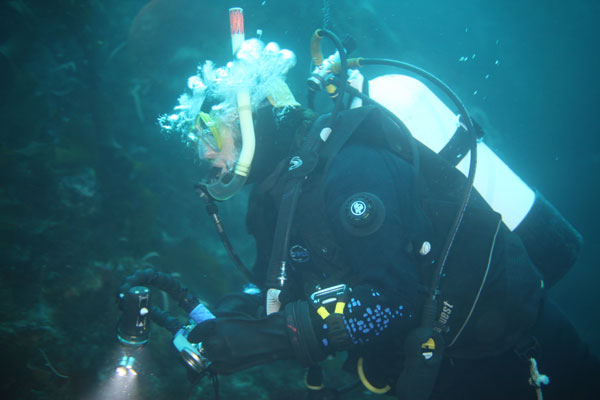
“I’m trying to see if seaweed that is more closely related to each other are producing similar chemicals and those less related to each other are producing different chemicals,” Heiser said.
While studying seaweed might seem a little odd to some, finding answers to these questions could potentially have a much broader impact on the world.
“Most of the time when new medication is being developed it’s based on chemicals, also natural compounds, produced in nature,” she said. “Our collaborators screen to see if the chemicals they are finding have any activity against diseases already in existence. It’s also really important to understand how the ecosystem is structured. The production of those chemical defenses will impact what can eat the seaweed, which can impact the rest of the food chain.”
When Heiser’s not in Antarctica she is in the lab analyzing the data collected, processing samples brought back from Antarctica, writing papers, presenting at conferences and enjoying life as a graduate student at UAB. She hopes to have most of the data together by next summer and then she’ll start writing. Her plan is to finish her Ph.D. by the end of 2020. Until then, she continues to develop those skills which she hopes will make her stand out as a young scientist.
“I’m definitely being prepared in so many different ways,” Heiser said. “Dr. Amsler is very supportive and encourages me to apply for funding. I also love the many different ways the Graduate School helps students learn how to communicate their science. As a scientist, knowing how to apply for funding and communicating your research to all types of audiences are probably the two most important things to know, and UAB does a great job ensuring their students can do both.”
She’s also gotten involved in the Graduate Student Government and the Phycological Society of America, where she is helping organize a student-led symposium during the group’s annual conference in Florida next year.
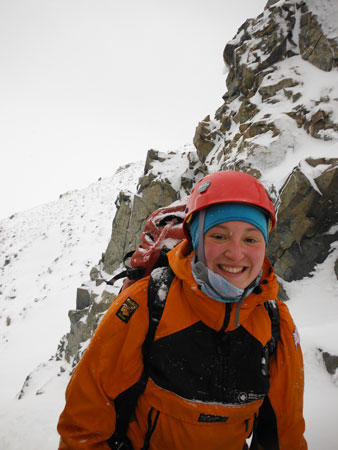
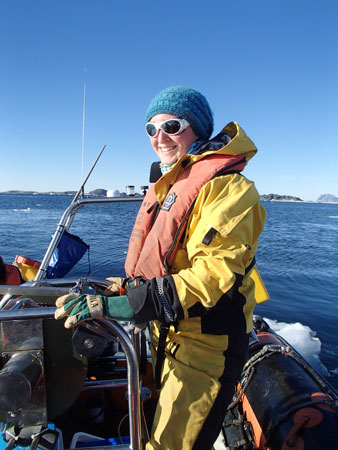
Her future plans include a postdoctoral fellowship, location undetermined, and hopefully a professorship one day. She intends to continue studying the structure of the ecosystem, particularly the algae, and hopes she will have an opportunity to spend time in New Zealand, Canada or Alaska, three places she would love to study.
But she also hasn’t given up on Antarctica.
“Even though I’ve been working on this project for a couple of years, I have so many questions still left unanswered,” she said. “It’s such a unique place and it’s so hard to study because of the cold and the limited amount of time you can actually spend underwater. But because of these limitations there are so many things you could research, so many questions you could ask. I guess that’s the point of research – answer one question and another pops up.”
Despite not knowing exactly where she will go or what she will do, she does know that whatever the future holds, there will definitely be scuba diving.